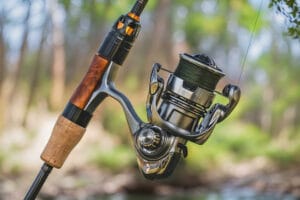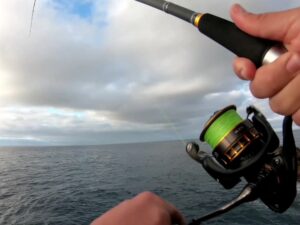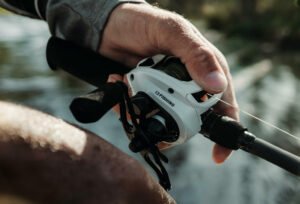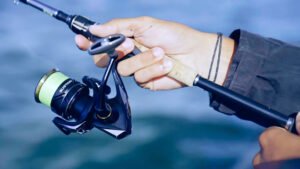Smallmouth Bass
One of the most popular game fish in America. There’s a lot you may not know about this aggressive predator. Learn more about this amazing fish in our detailed guide below
Home » Knowledge Base » Species » Smallmouth Bass – Detailed Guide to the Brown Bass
Smallmouth Bass Overview:
Common name: Smallmouth bass
Scientific name: Micropterus dolomieu
Other names: Smallie, bronzeback, bareback bass, brown bass
Smallmouth bass are a freshwater fish species that can be found in many parts of the United States. They are a popular sport fish because they are a challenging fish to catch and are considered a good eating fish to many.
Smallmouth bass are native to the United States and Canada. Originally located mostly in the northern states of the US, their habitat now ranges throughout most of the US. There are a few southern states where smallmouth bass population has been unable to make a foothold, mostly due to the water temperature in those states being consistently too high.
Smallmouth bass are a popular sport fish because they are a challenging fish to catch. They are not as aggressive as some of the other black bass species, but make up for that with their fighting spirit when hooked. They are a good eating fish, and their popularity as a game fish has led to them being stocked in many lakes and reservoirs throughout the US.
As part of the sunfish family, they are often confused with other species of bass, like the largemouth. Though similar to some of the other freshwater bass species in the sunfish family of Micropterus, they are distinctively different in a number of ways.
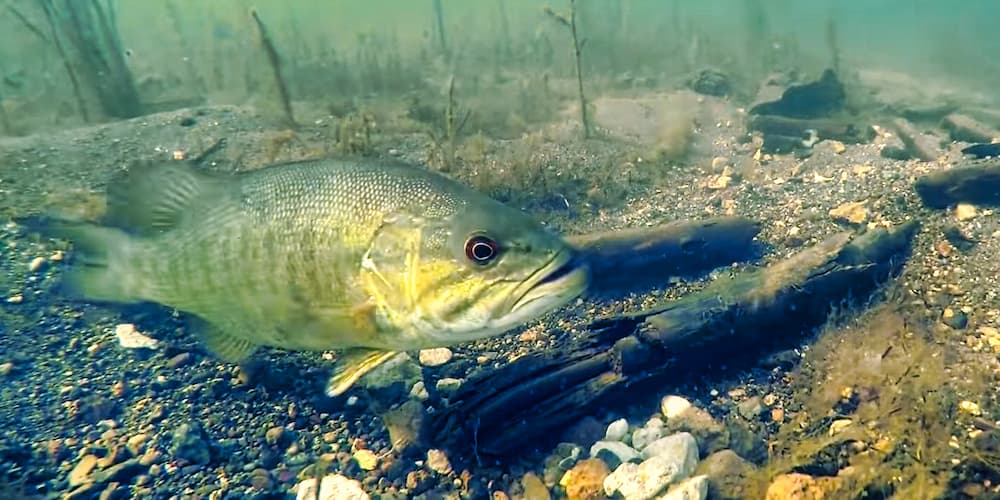
Key Characteristics:
The smallmouth bass is a member of the black bass family and is a freshwater fish. They are usually a bronze to brown color, with a greenish sheen. They have dark vertical stripes going down their side.
Smallmouth bass are a deep-bodied fish, typically growing to between 12 and 16 inches in length, but can grow up to 27 inches in length. They can weigh up to 11 pounds, but the average weight for a large smallmouth bass is around 6 pounds.
One of the most distinguishing aspects of the smallmouth is that their upper jawline does not extend past their eye when their mouth is closed.
Habitat:
Smallmouth bass are freshwater fish that prefer cooler water temperatures, clear water, and the existence of strong currents within the water that they live. You’ll find them living in lakes, ponds, reservoirs, and rivers throughout most of the United States.
Smallmouth bass are not as tolerant of warm water as largemouth bass or spotted bass, so you won’t find them in as many southern states. They have also been introduced into many lakes and reservoirs throughout the US as a popular sport fish.
Depending on the time of year, smallmouth will typically hang out near fast flowing water currents in rivers or streams and in deeper water pockets in lakes and reservoirs.
Feeding Patterns
Smallmouth bass are opportunistic feeders, meaning they will eat whatever is available to them.
In the spring and fall, they actively hunt early in the morning.
In the summer, they will hunt at night.
In the winter, they enter into a semi-hibernation and will feed very rarely.
Smallmouth bass will feed on just about anything in the water they can get a hold of. Including, smaller fish, aquatic insect, crayfish, small invertebrates, larvae and other small creatures.
As ambush predators, they will typically wait for their prey to come to them in areas of fast-moving water.
Spawning Season:
The smallmouth spawning season typically starts when the water temperatures get up to around 60′. Depending on the location, this will generally happen between May and June.
Once water temperatures begin to increase, male smallmouth will build nests to attract a female. These nests will be built in semi-shallow rocky bottom areas of lakes and rivers, usually around 5-20 feet in depth.
Female smallmouth will lay upward of 20,000 eggs in a single spawning season. Males will then guard and protect the nests until the eggs hatch and will continue to protect the baby bass, called “fry”, for a couple of weeks. At which time, the fry will move on from the nest and begin fending for themselves.
5 Tips For Smallmouth Bass Fishing:
Smallmouth bass are a popular sport fish and can be found in many lakes and reservoirs throughout the US. They can be caught using a variety of methods, including fishing lures, jigs, spinnerbaits, and even live bait and baitfish.
When fishing for smallmouth, it is important to use the right presentation for the conditions you are fishing in. For example, in fast-moving water, use a lure or bait that will mimic the movement of a fish.
Smallmouth have a tendency to move around the body of water that they live in throughout the day, but there are going to be certain areas and times of the day that will help increase your likelihood of landing one.
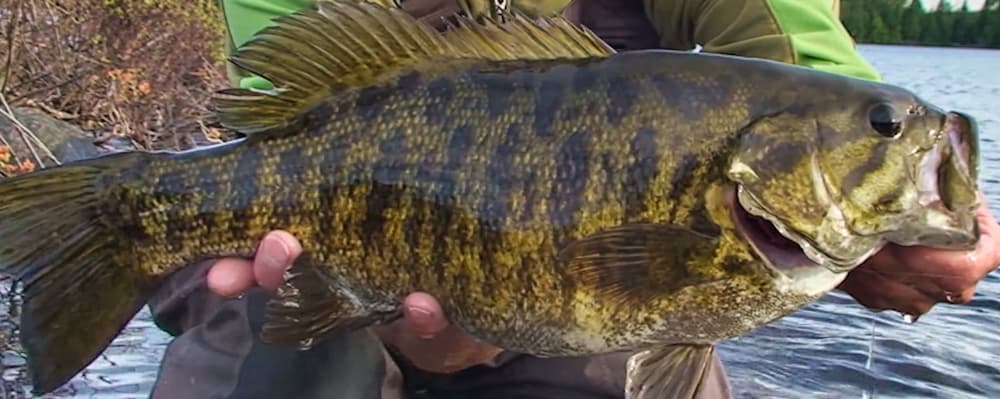
1. Fish near moving water:
Smallmouth are opportunistic hunters and will hang out in areas where food comes to them.
By hiding under rocks, logs, or weeds near a water current, it increases their chances of food coming to them.
If there isn’t any moving water in the lake, river, or stream you’re fishing in, look for other areas where a smallmouth would be able to ambush prey. Such as drop-offs, points, and along the edge of the water.
2. Use big baits if you want to catch big smallmouth bass:
A big smallmouth bass is a hungry smallmouth bass, so using a big bait can be a good way to tempt one into biting.
Just because they’re called “smallmouth” doesn’t mean that a large one has a small mouth. A trophy sized bass can easily get its mouth around a large lure.
While it’s definitely possible to catch a lunker with a finesse presentation, if you’re wanting to land a big one, try to stick with larger spinnerbaits, jerkbait, topwater, tube, etc. A larger sized lure is a more appealing meal to a large smallmouth.
3. Get started early in the morning:
Morning is typically the best time of day to fish for smallmouth bass.
This will vary depending on the time of year, but for the most active spring and fall seasons, you’ll have the best chance of catching smallmouth when they’re actively feeding early in the morning.
4. Find unpressured waters:
One of the best ways to increase your chances of catching a big smallmouth bass is to find unpressured waters.
This can be difficult, but if you can find a spot where there isn’t a lot of pressure from other anglers, your odds of landing a big one go up.
5. Use the right presentations for smallmouth:
As mentioned before, using the right presentation is key when fishing for smallmouth bass.
Depending on the conditions you are fishing in, will determine what type of lure or bait you should be using.
In general, using a lure or bait that is in the same size range as the fish you are targeting will increase your chances of landing one.
If you’re catching a lot of fish, but not quite the size you’re looking for, try using the same type of lure, just in a larger size and see if that helps.
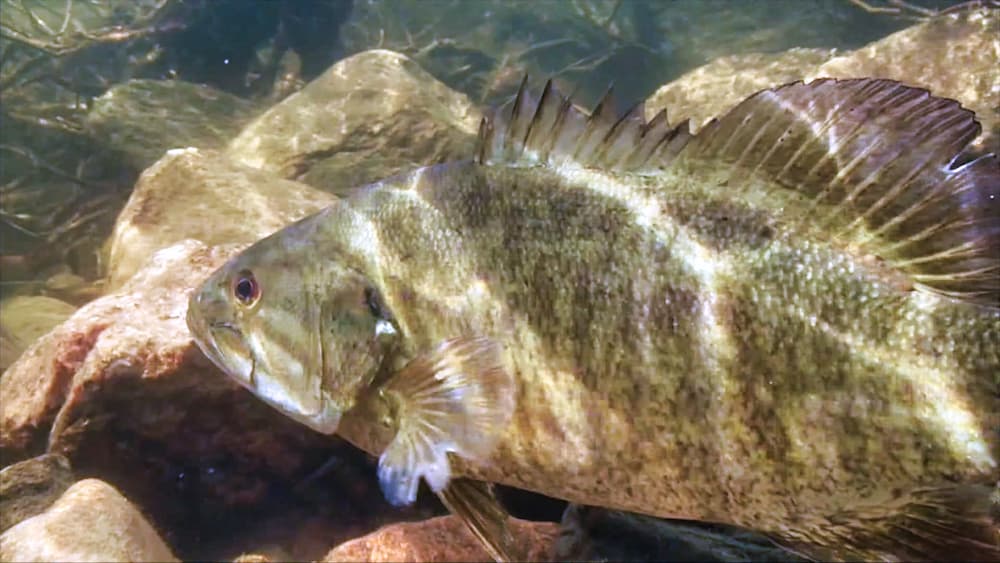
Great Locations For Smallmouth Fishing:
Want to catch smallmouth? The best way is to go where they live! Michigan and the Great Lakes region are prime smallmouth habitat, but there are many other locations throughout the States that provide excellent fishing opportunities.
When fishing in a new location, make sure you check on any fishing regulations, get the proper fishing license, and read a local fishing report to make sure you have all of the information you need.
Here are some great spots to find some of the best smallmouth fishing in the country.
Lake Erie, Ohio:
Lake Erie is a massive lake, located on the border of the United States and Canada. The lake is the shallowest of the Great Lakes, with a maximum depth of 210 feet.
The lake reaches a maximum length of 241 miles, with a width of 57 miles. The lake has an average depth of 62 feet.
Lake Erie is a great location for fishing for smallmouth bass, and many other species like walleye, perch, trout, and many more.
Lake Erie is known for its trophy bass, and with the right technique and presentation, can be the easiest trophy smallmouth bass fishing in the US.
Lake St. Clair, Michigan:
Lake St. Clair is 430 square miles of smallmouth fishing heaven.
In 2013, 6 pounders were the common size to catch. Heavy pressure caused the population to decrease slightly, but it has been on the uptick and is still one of the best places to fish for smallies.
Lake St. Clair is a fairly shallow lake, with an average water depth of 11 feet and a maximum depth of 21 feet, making it a great location for shore or boat fishing alike.
Lake Coeur d' Alene, Idaho:
Lake Coeur d’ Alene is around 25,000 acres of pristine beauty. Filled with wildlife and rocky shoreline, Lake Coeur d’ Alene is where you want to go when you want to see a bit of natures beauty while also catching larger fish.
If you’re looking to catch yourself some smallmouth, this is the place to come. 1000’s of acres of unpressured water makes this the place to come no regardless of your style.
Susquehanna River, Pennsylvania:
The Susquehanna River is a river in central Pennsylvania. The river is connected to the Chesapeake Bay and is about 441 miles long with over 400 miles of that being fishable.
The Susquehanna River is a prime spot for smallmouth fishing. The river is home to a large population of smallmouth bass and provides many excellent opportunities for catching them.
The Susquehanna River is a wide river, with many deep holes and plenty of riffles and runs that provide excellent habitat for smallmouth bass. The river is also well known for its excellent trout fishing.
Lake Sakakawea, North Dakota:
Lake Sakakawea is a reservoir on the Missouri River, in North Dakota. The reservoir is formed by the Garrison Dam and and is the third-largest man made reservoir in the USA. It has a length of 177 miles and a width of 14 miles.
Lake Sakakawea is a great place to fish for smallmouth bass in the summer and fall when the weather is warmer, and they are most active.
The reservoir is a deep reservoir, with a maximum depth of 180 feet and an average depth of 62 feet. This makes it a great location for fishing for smallmouth bass with jigs, crankbaits, and soft plastics.
The French Broad River, North Carolina:
The French Broad River is a river in North Carolina. The river is about 120 miles long and is a popular spot for fishing for smallmouth bass. The river provides a number of excellent fishing opportunities for smallmouth bass. There are a number of deep holes along the entire river as well as many shallow areas where smallmouth will go during active hunting times.
The river provides a variety of fishing opportunities for fishermen of all ages and abilities.
Lake Jocassee, South Carolina:
Lake Jocassee is a lake in South Carolina, located on the border of North Carolina. The lake is a man made lake that encompasses a size of 7,565 acres.
Due to its northern mountain location, Lake Jocassee features one of the few South Carolina habitats suitable for smallmouth bass.
Since smallmouth are not a native fish to South Carolina, researchers introduced them to Lake Jocassee in the 1980s.
Due to the perfect habitat in Lake Jocassee, the smallmouth population has grown rapidly and provides one of the best smallmouth fishing locations in the South East of the US.

Conclusion:
Smallmouth bass are a very popular freshwater sport fish in North America, and for good reason. They are a very challenging fish, with a fighting spirit that you won’t find in many other species.
If you’re wanting to increase your chances of landing one of these beautiful, yet aggressive fish, be sure to keep this information and tips in mind next time you are heading out to fish.
As an Amazon Associate I earn from qualifying purchases.

